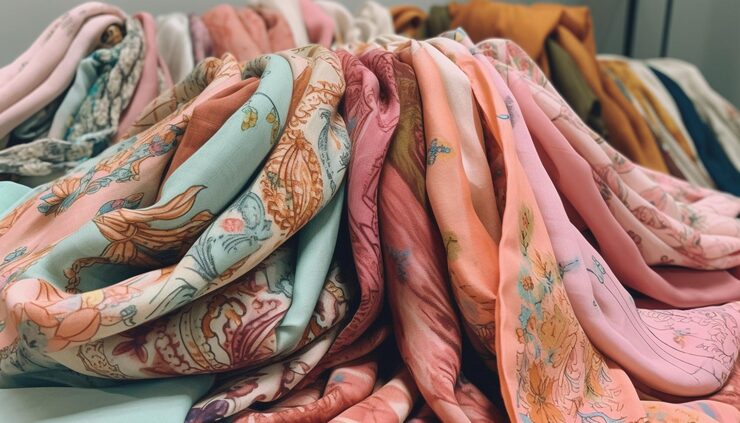Did the headscarf exist before Islam?
Did the Hijab exist before Islam?
Introduction: The Interweaving of the Hijab and Culture
As a cultural and religious symbol, the headscarf appears in different cultures around the world. In Muslim societies, the headscarf (Hijab) is
often seen as a symbol of female modesty, dignity and faith. However, the history of the headscarf is not limited to the advent of Islam. In fact,
it has been widely used and used in history before Islam. This article will explore whether the headscarf existed before Islam and analyze its role
in different cultures and religions.
The Historical Origins of the Headscarf
1. Hijab in Ancient Civilizations
Before the birth of Islam, headscarves or similar veils existed in multiple ancient civilizations. For example, in ancient Babylon, Egypt, Greece,
and Rome, women often wore some form of headscarf or veil. Women in ancient Egypt, especially those of the upper class, often wore veils to
cover themselves to show their noble and unique identity. In ancient Greece and Rome, the headscarf was also a symbol of women's social
status, especially in public places, where wearing a veil was seen as a manifestation of women's modesty.
2. The influence of Judaism and Christianity
In the traditions of Judaism and Christianity, examples of wearing headscarves can also be found. For example, the book of 1 Corinthians in the
Bible mentions that women should cover their hair when praying and worshipping. This requirement in Christian doctrine is similar to the
provisions of Islam. In Judaism, married women often wear headscarves or veils to show their marital status and respect for tradition.
3. Hijab in ancient Arab culture
Before the birth of Islam, women in the Arab region also had the tradition of wearing headscarves. In early Arab society, women's clothing and
covering methods were not uniform, but women in some tribes would wear cloth to cover their heads and bodies to maintain privacy and
modesty. According to historical records, Arab society has stricter regulations on women's clothing, especially women of the nobility and upper
class, who often wear complex headscarves to show their social status and dignity.
Hijab regulations in Islam
1. Hijab regulations in the Quran
Although headscarves existed before Islam, Islam established more specific wearing regulations. In the Quran, women are taught to "cover"
themselves and remain modest. The most famous passage appears in Chapter 24 (Sura al-Nur), Verse 31 of the Quran, which stipulates that
women should cover their breasts and cover their hair. This doctrine is interpreted as a protection of women's privacy and dignity. The specific
verse is as follows: "And cover their breasts and reveal no part of themselves except to their husbands, their fathers, their husbands' fathers or
their children..."
2. Cultural and religious significance of Hijab
In Islam, headscarves are not only a covering for women's bodies, but also a symbol of modesty and inner beauty. The act of wearing
headscarves represents women's respect for themselves, and also reflects their piety and obedience to God. By wearing headscarves, women
can protect themselves from excessive attention from the outside world, while showing their firm belief and confidence in their hearts.
Social and cultural functions of hijab
1. hijab and social status
Historically, headscarves are not only a religious requirement, but also a symbol of social status. In many ancient societies, women who wore
headscarves usually belonged to the upper class of society. The headscarf sometimes symbolizes a woman's marital status, social identity, and
family status. Over time, the meaning of the headscarf has gradually changed from a simple symbol of social status to a symbol that focuses
more on personal beliefs and cultural identity.
2. hijab and women's autonomy
Wearing a headscarf is a choice made by many Muslim women, not just a mandatory requirement of society. In modern society, many Muslim
women believe that wearing a headscarf is an expression of personal beliefs and a symbol of their identity and independence. The choice to
wear a headscarf reflects their respect for themselves and their identification with tradition and culture. In this process, the headscarf has
become a form of personal expression rather than a simple cultural burden.
3. hijab and social acceptance
With the acceleration of globalization, wearing a headscarf has become a part of cross-cultural communication for many Muslim women. In
some countries, wearing a headscarf has become an important symbol of Muslim women's identity and a way for them to communicate with
other cultures. However, in some areas, the wearing of headscarves has also caused social controversy, with some people considering it a
constraint, while others believe it is a respect for personal beliefs and culture.
Conclusion: The cross-cultural history of the hijab
As a cultural symbol, the headscarf transcends religious and regional boundaries and exists in multiple civilizations and religions. From ancient
Egypt and Greece to Judaism, Christianity, and Islam, the forms and functions of headscarves vary, but the common concept behind them is the
embodiment of women's modesty, dignity, and social status. Islam's regulations on headscarves further standardize this tradition, making it an
important part of Muslim women's daily lives. Whether as a manifestation of religious beliefs or as a part of social culture, the headscarf carries
rich cultural significance throughout history. For today's Muslim women, wearing a headscarf is still an expression of their self-identity and a
commitment to their faith, family, and social responsibilities.




